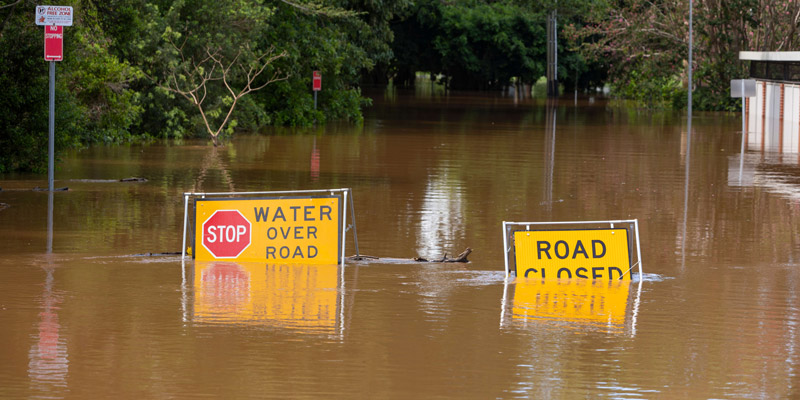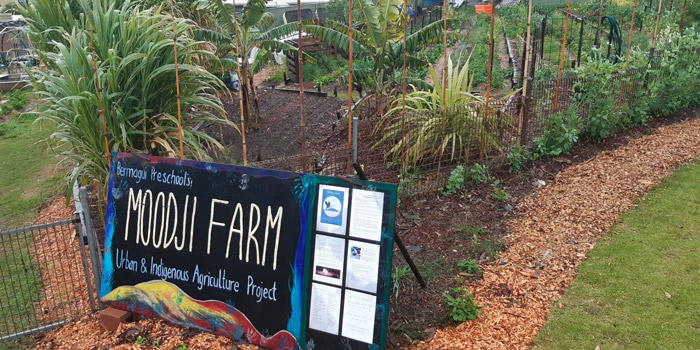One of Australia’s first experiences of a compound climate event was in 2009, when an unprecedented heatwave culminated in the Black Saturday bushfires.
Most climate science... has been about the risk of changing extremes in the singular. A more mature attitude is to look at how these things interact and compound in time and space to drive risk.
Professor Andy Pitman, Director, ARC Centre of Excellence for Climate Extremes, University of NSW
When torrential rain fell on Lismore’s saturated soil, the water had nowhere to go. As one storm after another hit the region, the impact intensified and the town was flooded.
Compound events should be considered as part of our approach to adaptation, “because they are demonstrably occurring and they’re getting worse,” Professor Andy Pitman told the audience at the 2022 AdaptNSW Forum.
The Forum brought together some of Australia’s most prominent business, government and scientific leaders to explore the obstacles and opportunities ahead as our nation adapts to climate change.
Many major catastrophic events in Australia have characteristics typical of compound events.
Until recently climate scientists have focused on single drivers of events – like the risk of a heatwave or an intense rainfall event. But assessing one hazard in isolation can lead to an underestimation of risk, because the processes that cause extreme events often interact.
Director of the ARC Centre of Excellence for Climate Extremes, Andy Pitman was one of the co-authors of the Intergovernmental Panel on Climate Change (IPCC) report which was awarded the Nobel Peace Prize in 2007.
There isn't an agreed definition of what constitutes a compound event from the climate science community, but there are “at least four,” Andy said. These are:
- Preconditional: Events that are influenced by prior climate conditions, such as heavy rainfall following a period of prolonged drought.
- Spatially compounding: Events where multiple factors interact across different geographical areas, leading to compound impacts, like simultaneous heatwaves and wildfires in different regions.
- Temporally compounding: Events that occur sequentially, compounding their effects over time, such as consecutive storms or heatwaves.
- Multivariate: Events influenced by the combination of multiple climate variables or drivers, like heavy rainfall coupled with high temperatures leading to flooding.
How we calculate the risk that a compound events will place a system at risk of failure is an emerging field. “Don’t think anyone can tell you the [compound] risks with accuracy,” Andy warned.
But climate scientists don’t talk in terms of “100-year events” anymore. Instead, they consider “one per cent risks”. The best way to understand the risk of a compound event is to think about the likelihood of two “one per cent risks” happening at the same time, like heavy rainfall and extreme winds.
Compound events “tend to be statistically quite rare” because “there are very few places on Earth that we have a richness of data that goes back far enough in time to make robust and good assessments of risk”.
Compound events don’t always start with extremes, Andy added. "Buildings are often built to withstand quite strong winds or quite heavy rain. But if you have less than heavy rain co-occurring simultaneously with not very strong winds, you can get ingress into a building [that can] cause quite substantial damage. An understanding of that risk can help protect a property and, for instance, reduce insurance loss.”
Thinking about tipping points
The sixth IPCC report, released in 2021, defines a tipping point as a “critical threshold beyond which a system reorganises, often abruptly and/or irreversibly”.
Examples of potential “unambiguous” tipping points include collapse of the polar ice sheets, permafrost thaw, ocean acidification and dieback of the Amazon rainforest, Andy said.
"There is very very little science on tipping points. There's a lot of expert judgement papers, but the actual deep science around risk and probability of tipping points is something that only now is just beginning to emerge.”
Tipping points shouldn’t keep us awake at night – not because they aren’t important, but because they can’t be planned for. Andy compared tipping points to the “scale of impact” of an asteroid hitting Sydney. It is something that is beyond the bounds of adaptation.
Instead, we must focus on systematically reducing our emissions to avoid tipping points, while at the same time adapting to climate extremes by thinking about the compounding events which are already on record and “are already breaking the resilience of systems”.
We need the science, the frameworks, but ultimately [we need] the power of persuasion... to build resilience and adapt.
Dr Tayanah O’Donnell, Honorary Associate Professor, Institute for Climate, Energy & Disaster Solutions, Australian National University
Putting people first
Climate science is focused on “facts,” but “the last thing that changes people's minds are facts,” Andy told the 2022 AdaptNSW Forum audience.
Therefore, psychologists and social scientists play a pivotal role in helping Australians understand why we must act to avoid tipping points and compound events.
Joining Andy Pitman in the conversation was Dr Tayanah O’Donnell, a Partner with Deloitte and an Honorary Associate Professor at the Australian National University's Institute for Climate, Energy & Disaster Solutions.
As a social scientist, Tayanah looks at compound events from the point of view of people. “When you go to Lismore and people tell you of their trauma, that means something. And we should take that into account when we're thinking about compounding cascading risks,” she said.
“What does this mean for decision-makers? How does this make people feel? And how does that then drive their behaviour?”
Human stories have the power to persuade people in way that dry facts cannot, but there is no winning formula for communication, Tayanah added. “But if I had a formula, it would be take people by the hand and bring them along.”
Climate security advisor Ian Cumming agreed. We need to use a “different type of language” to connect more people to climate adaptation, he suggested. “We don't need information. We've got lots of information.” Instead, “we need intelligence” to make informed decisions to adapt our systems.
“Change is the new normal,” Ian said. That means climate resilience and adaptation must be in “every decision, in every action, in every behaviour [and] at every level”.
The 2022 AdaptNSW Forum, held in partnership between the National Environmental Science Program and the NSW Government’s Office of Energy and Climate Change (OECC), attracted around 330 attendees and 85 presenters. Join the conversation in 2023 for two days of discovery, collaboration and innovation from 4-5 December. Register today for the 2023 AdaptNSW Forum.
For more content, check out the Adapt2022 Forum session summaries.



